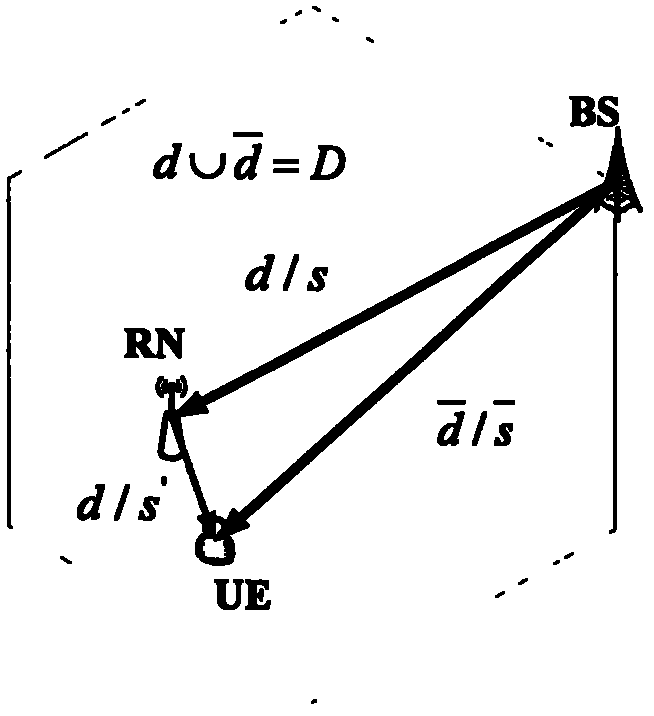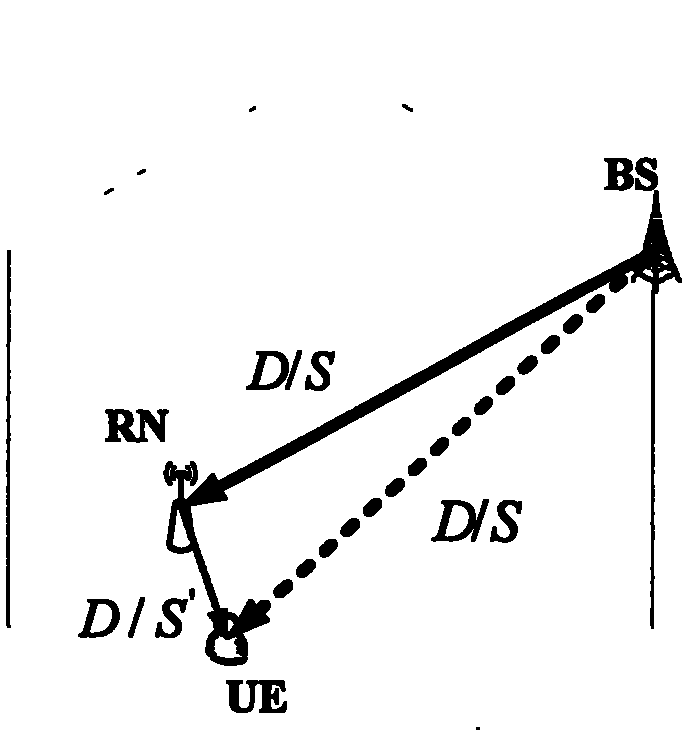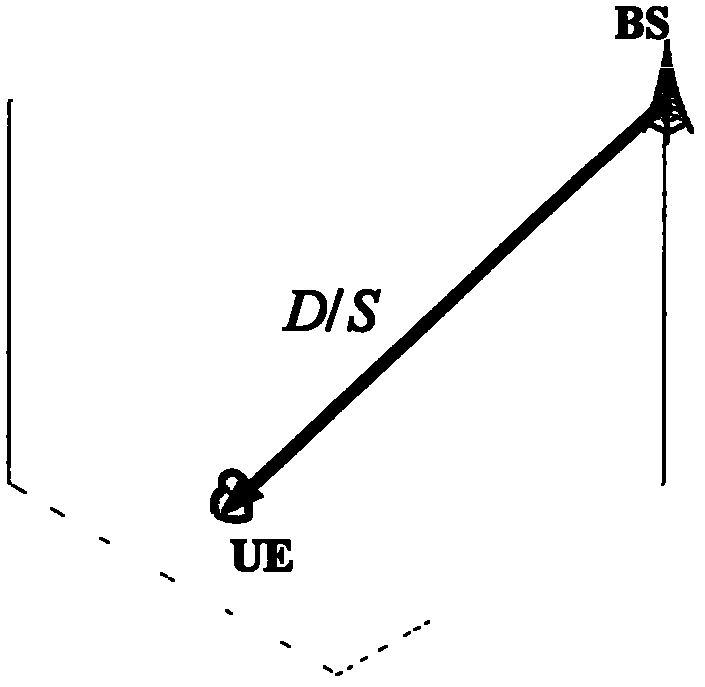Downlink self-adaptive transmission method in cellular relay network
A technology of cellular relay network and self-adaptive transmission, applied in the field of mobile communication, can solve problems such as poor performance, poor capacity, and limited performance of TH solutions
- Summary
- Abstract
- Description
- Claims
- Application Information
AI Technical Summary
Problems solved by technology
Method used
Image
Examples
Embodiment Construction
[0044] The downlink adaptive transmission method in the cellular relay network proposed by the present invention has a flow chart as follows Figure 4 shown, including the following steps:
[0045] (1) The base station in the cellular relay network obtains the channel information of the three downlinks, and the specific process is as follows:
[0046] Users in the cellular relay network send uplink pilot signals to the base stations and relay nodes in the cellular relay network, while the relay nodes in the cellular relay network send uplink pilot signals to the base stations. The channel reciprocity estimates the downlink channel information of the BR and BU, the relay node estimates the downlink channel information of the RU according to the channel reciprocity of the time division duplex system, and the relay node feeds back the channel information of the link RU to the base station through the feedback channel . For example, consider a time division duplex cellular relay...
PUM
 Login to View More
Login to View More Abstract
Description
Claims
Application Information
 Login to View More
Login to View More - R&D
- Intellectual Property
- Life Sciences
- Materials
- Tech Scout
- Unparalleled Data Quality
- Higher Quality Content
- 60% Fewer Hallucinations
Browse by: Latest US Patents, China's latest patents, Technical Efficacy Thesaurus, Application Domain, Technology Topic, Popular Technical Reports.
© 2025 PatSnap. All rights reserved.Legal|Privacy policy|Modern Slavery Act Transparency Statement|Sitemap|About US| Contact US: help@patsnap.com



